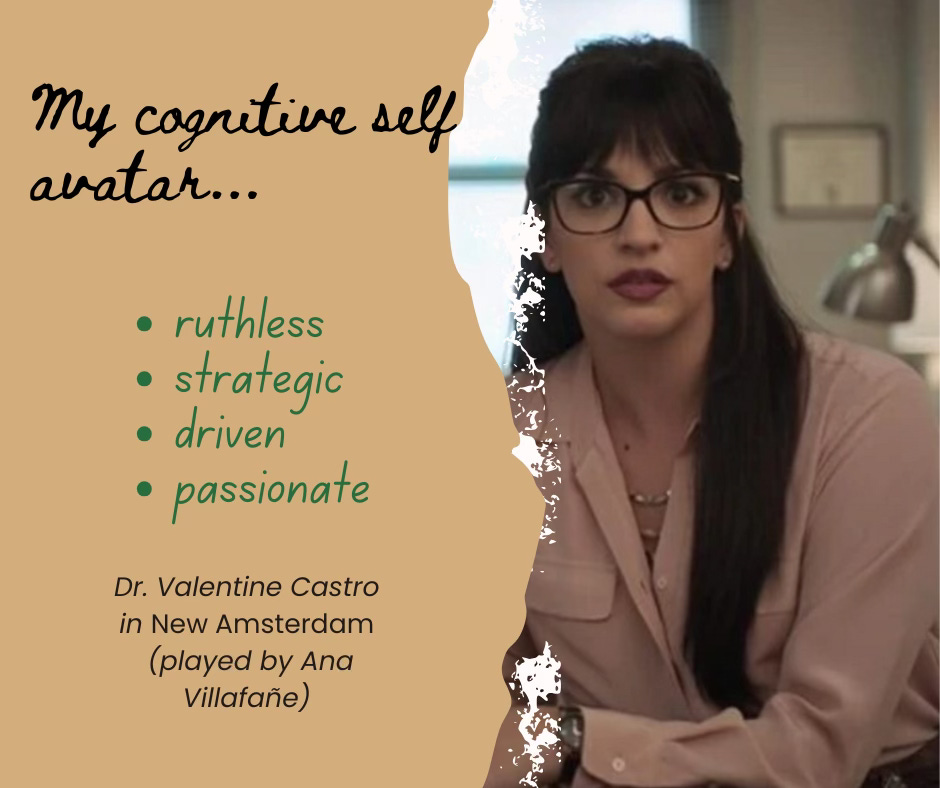
I could dig endlessly into the concept of the three people inside of us. And I know that there are likely (to take this story into its sequel and prequel and 23 iteration forms) other folks inside of us clamouring for a say. However. I am writing as an occupational therapist first. So I’m staying with the tried and true heart, brain, and body triad, and keeping the uproar as minimal as possible, thereby.
The fact is, team management is more of an art than a science. And it looks soooo easy when one is PART of the team and not THE manager (all team managers nodding their heads here). In fact, it looks like anyone could do it. And a whole lot better than it’s being done. I hate to admit, I’ve been the one with that opinion. More than a few times. Now that I am, for real, a team manager, I am, shall we say, humbled.
Teams are messy. They should be. I read a book once that made that point quite brilliantly, and changed my view forever as to what to aspire to in creating teams for projects. Teams should have the widest possible range of perspectives, skillsets, and even temperaments. Teams should engage in disputes, or else they may as well be one individual doing a job. We all hate group projects, after all, unless there truly is a flow of somewhat equivalent energy from each member. Passion, investment, or at least some backbone! What teams do need to agree on (and this is a dealbreaker in my opinion) is the point. The mission. The final objective.
As long as teams can agree on that, all hell can break loose in committee (and it will) because everyone is throwing out their best possible ideas as to HOW to get to the goal. Is it loud? Yes. Do feelings get hurt? Oh for sure. Are some ideas pitched better and therefore accepted by others on volume over merit? Absolutely! HOWEVER, at the end of the day (or meeting, or retreat, or zoom conference complete with audio issues and family fly-bys) the leader can still look at everything strewn across the table, and make sense of it. Because it is all about the same problem. It is all a set of ideas as to how to get from one place to an agreed upon other place And the more ideas, the better. At this stage, anyway.
Teams need a clear vision and mission even more than they need a clear leader. There are sports teams that don’t have a coach (likely no one is paid on those teams, but still). There are churches with no pastor. There are families with no patriarch. These groups can still function and progress towards what they all agree on as “better” if they all agree on that as better. And if it (“better”) is specific and concrete enough for everyone to be able to see progress.
In my story about how the individual works within their environmental context, doing life in a balanced and effective and engaged manner, the spirit is in the centre. This less obvious part of us can function as the leader, if we let it. And here is where OT meets faith and philosophy and psychology and there is a little bit of a mashup of terms and ideas. I don’t want to get embroiled in semantic arguments (I have enough words going on as it is). So I’m just going to be a writer, use some artistic license, and tell the story with characters who may remind you of other archetypal beings (but that’s for you to decide!).
Basically, in my story, our essential self (by which I mean the true, unarmoured, full-of-potential and possibility, good but very unique person we are) is represented very, very differently by different parts of our being. And this is a lot like a good team. We have our body, who is stuck with the real world of mass, and time, and physics, and pain, and aging, and carrying the rest of us around. We have our brain, which for our purposes is the part of us that solves problems presented to us in daily life. And we have our emotional centre, our heart, the feelings/tenderness/connection-seeking/threat-avoiding inner child who longs for both security AND love (so hard to find those in the same place).
These three individuals can be at odds, but you as the spiritual centre are responsible for all of them - for the personalities they are, and for how they relate with each other. A good team leader supports their team. A great team leader likes their team and sees the potential of each and all together, both. And a really great leader? Likes their team while still keeping track of the team’s destination. Where are “we” going? What is our purpose? How do we measure progress? That’s your sacred role, and it’s not obvious. Certainly it’s not a question for any one of your team members. Likely, it’s something that you need to spend years considering.

You, as your own team leader…can you see how this is harder than it sounds? If you were to not only support, but also have some fondness for the varying characters clamouring for control or maybe just a say? You could have such a rich well of wisdom. You do have a rich well of wisdom, but I’m betting that, like me, one of “you” tends to take over, become a bully, and shut the other team members right up. Balance, and safety, in your inner home? Super hard to achieve. You need to get all of you to feel safe, respected, heard, and NOT in charge. You need a good team culture.
Sensory Strategy - for getting to know your team
The first step is, again, basing this off my own experience, to do a bit of a meet and greet. Likely, your most vocal team member has been hogging the stage for so long and dissing the other two so successfully that you may believe that parts of you are (depending on the trash talk going on): weak, ineffectual, too sensitive, immature, not presentable, awkward, embarrassing, dumb…you get the idea. One part of you is possibly not being very kind to the other parts of you. This is flagrant attention-seeking and control-seeking behaviour. You can put a stop to it! As team leader, you will be so very appreciated if you do!

So…here’s the idea. Create a character board for each of the parts of you, and inhabit it with an avatar. I’ve done this using movie/TV characters, because that’s how my imagination works. You can do this with your own memojis, or graphic representations, or photos, or whatever. Doesn’t matter. The point is, try to spend some time with each authentic part of YOU, and let them tell their story in their own way, and in their own words. WITHOUT heckling. You may be surprised at who you carry inside. You may feel some sympathy for the parts of you who have borne some bullying without protection or relief, for a very long time. This exercise may help you soften towards the parts of you that may have previously been a source of embarrassment, or even shame.
It’s also fun and interesting to note such things as: what gender are each part of you? Social class? Age? Experience or point in the life span? Expertise? Interests? Blind spots or fatal flaws? Strengths?
What unique contributions could each character make, if you guaranteed them the floor for a reasonable length of time, the next time you have a tough decision to make?
Further, who is the one most qualified to be “in charge” of certain sub-tasks in your life? For me, my cognitive self tends to take over ALL THE TIME, causing terrible confusion when it’s really my emotional self who has the wisdom in a particular setting. Or my physical self who should be calling the shots.
Here are my avatars (this was super fun for me, and I do think this will help with my inner monologues becoming more productive discussions):
I am all of these, and none of these. They are part of me, but they are not me. I exist as a sum that is greater than my parts, or else I couldn’t talk with them, reason, argue, agree, appreciate, or love them. Balancing their unique temperaments, points of view, gifts, and weaknesses is what I can do to help them all thrive, and more to the point, help me thrive in the very real world I inhabit, with or without their help.
Have fun with this strategy. And if there is inner resistance, have fun figuring out who and why and what part of you is defending what…It all helps with creating a more functional, balanced, diverse and safe inner home.







I love this idea!